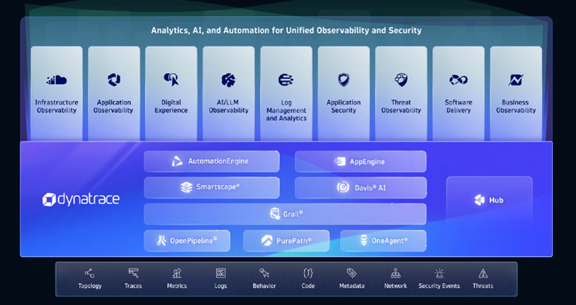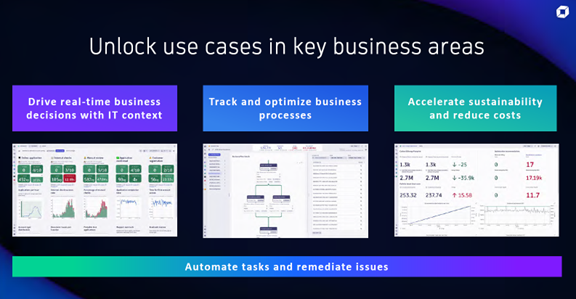Dynatrace Advances AI Capabilities, Transitioning From Reactive Analytics to Predictive Intelligence
Modern observability has evolved beyond merely diagnosing what went wrong; it’s now about predicting what could go wrong and proactively addressing it before it impacts the business. With AI and machine learning becoming integral to both IT and business operations, tracking, auditing, and monitoring systems has never been more critical.

Image: Dynatrace
Dynatrace’s Vision for AI-Driven Observability
In a recent briefing, Dynatrace showcased its AI-powered observability platform, emphasizing its capabilities in monitoring AI performance and ensuring compliance through model audits. As a long-standing player in the space, Dynatrace has been leveraging machine learning and AI for years. Three standout features from the briefing include:
Agentic AI Platform:
Dynatrace is transforming into an “agentic” AI platform, one that doesn’t just collect data but also reasons, acts, and learns. By connecting IT, developers, and operations, it automates incident response and boosts productivity.
Autonomous Intelligence:
Envisioning a future where software operates flawlessly, Dynatrace uses AI to anticipate issues, recommend solutions, and even execute automated fixes. This reduces time spent on maintenance, allowing teams to focus on innovation.
Business Value Alignment:
Dynatrace seeks to bridge the gap between technical performance and business outcomes. This can enable organizations to optimize processes, reduce costs, and make smarter decisions in real time.
Imagine correlating data of foot traffic to a retail store (unstructured data) with store sales and finding issues with out-of-stock items, or if there’s no increase in sales but walk-in traffic is increasing.

Image: Dynatrace
Insights from the State of Observability 2025 Report related to AI automation
According to Dynatrace’s State of Observability 2025 Report:
- Fewer than 40% of organizations currently use AI-driven automation for enhancing customer experience, labor allocation, financial resource management, or adapting to market changes.
- The anticipated ROI from real-time automation is 31%, highlighting significant untapped potential.

Image: Dynatrace
Dynatrace supports more than 15,000 customers in over 30
countries, with 1,300 experts and 24/7 coverage and offer hands-on onboarding,
live training, and a thriving user community. Other competitors to consider
include Datadog, New Relic, Splunk (acquired by Cisco).
Our Take
While IT departments typically leverage observability tools for operational monitoring and system health, business units can harness this same capability to gain deeper insights into customer interactions and performance analytics.
To effectively connect operational metrics with business outcomes, companies need to realign their KPI frameworks, moving beyond infrastructure-focused measurements like API response times to business-critical indicators such as purchase completion rates. This integration should extend across data sources (logs, metrics, traces) and connect with enterprise systems including revenue, ERP platforms, and customer success tools.
Dynatrace's growing emphasis on AIOps marks a significant evolution in the company's capabilities, positioning it at the forefront of innovation in observability and application performance monitoring.
The reality in many organizations is that IT teams flag application failures independently of related business consequences. When error rates spike, IT departments may identify the technical issue without simultaneously observing downstream effects like increased support ticket volume or abandoned shopping carts. This gap highlights the importance of adopting an integrated observability framework that encompasses the entire value chain.
As machine learning and autonomous systems proliferate throughout enterprise environments, observability platforms will play an increasingly vital role. Senior technology leaders, both CIOs and CTOs, must collaborate closely with business leaders to establish themselves as strategic partners driving organizational success, rather than remaining purely technical operators.
Want to Know More?
Application Performance & Observability-Enterprise 2025 | SoftwareReviews